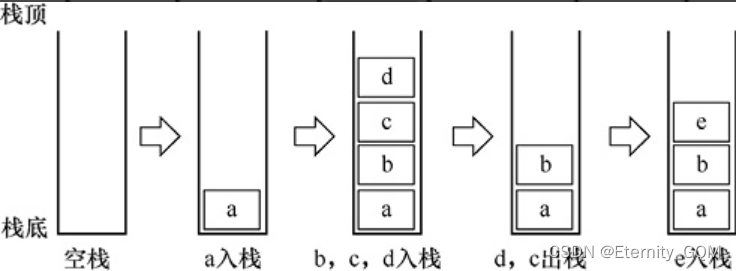文章目录
【STL编程】【竞赛常用】【part 1】
【STL编程】【竞赛常用】【part 2】
【STL编程】【竞赛常用】【part 3】
11. list 双向链表容器
list双向链表容器在头文件中声明,它对任一位置元素的查找、插入及删除都具有高效的常数阶算法时间复杂度。
#include <bits/stdc++.h> //使用万能头文件,无需写#include <list>
using namespace std;
int main(){
list<int> l;
l.push_back(2); //尾部插入新元素,链表自动扩张
l.push_back(2);
l.push_back(9);
l.push_back(12);
l.push_back(12);
l.push_back(4);
l.push_back(4);
l.push_back(6);
// l.clear();//清空链表
l.push_front(9); //头部插入新元素,链表自动扩张
list<int>::iterator it;
it = l.begin();
it++; //链表迭代器只能++或--操作,不能进行+n操作,因为list节点不是连续内存
l.insert(it, 20); //当前位置插入新元素
it++;
l.erase(it); //删除迭代器位置上的元素
for (it = l.begin(); it != l.end(); it++) //正向遍历
cout << *it << " ";
cout << endl;
l.remove(12); //删除所有值为12的元素
l.pop_front(); //删除链表首元素
l.pop_back(); //删除链表尾元素
it = find(l.begin(), l.end(), 4); //查找元素值为4
if (it != l.end())
cout << "find " << *it << endl;
l.sort(); //升序排列
l.unique(); //删除连续重复元素(只保留一个)
for (it = l.begin(); it != l.end(); it++) //正向遍历
cout << *it << " ";
cout << endl;
return 0;
}
/*
9 20 2 9 12 12 4 4 6
find 4
2 4 9 20
*/
结构体:
#include <bits/stdc++.h>
using namespace std;
struct student{
char *name;
int age;
char *city;
};
int main(){
student s[] = {
{"张三", 18, "浙江"},
{"李四", 19, "北京"},
{"王二", 18, "上海"}};
list<student> l;
l.push_back(s[0]); //插入元素
l.push_back(s[1]);
l.push_back(s[2]);
student x = {"刘四", 19, "新疆"};
l.push_front(x); //插入到首位,复杂度为O(1)
l.insert(l.begin(), x); //插入任意位置,时间复杂度O(1)
// l.pop_front();//删除首元素
// l.pop_back();//删除尾元素
l.erase(l.begin());
// l.erase(l.begin(),l.end());//删除区间的元素
for (list<student>::iterator i = l.begin(); i != l.end(); i++)
cout << (*i).name << " " << (*i).age << " " << (*i).city << "\n";
return 0;
}
/*
刘四 19 新疆
张三 18 浙江
李四 19 北京
王二 18 上海
*/
list链表归并例程
#include <bits/stdc++.h>
using namespace std;
void print(list<int> l){
list<int>::iterator i;
for (i = l.begin(); i != l.end(); i++)
cout << *i << " ";
cout << endl;
}
int main(){
list<int> l1;
for (int j = 10; j >= 0; j--)
l1.push_back(j);
list<int> l2;
list<int>::iterator ii;
l2.splice(l2.begin(), l1); //将l1的全部元素归并到L2,L1清空
ii = l2.begin()++;
l1.splice(l1.begin(), l2, ii); //将l2的ii位置的元素归并到l1,l2原元素删除
print(l1);
print(l2);
// swap(l1,l2);//交换l1,l2
l1.push_back(8);
l1.push_back(8);
l1.push_back(35);
l1.unique(); //除去连续重复元素
l2.push_back(30);
l1.sort(); //排序
l2.sort();
print(l1);
l2.merge(l1); // L1归并到l2,两链表需排序,具体见后面的见归并算法merge
print(l2);
return 0;
}
12. stack 堆栈容器
堆栈类似于一个一端开口、一端封闭的容器,开口端称为栈顶(Stack Top),封闭端称为栈底(Stack Bottom),元素的插入和删除只能在栈顶操作。堆栈的元素插入称为入栈,元素的删除称为出栈。堆栈的主要特点是“后进先出”(Last In First Out),即后入栈的元素先出栈。每次入栈的元素都放在原当前栈顶元素之上,成为新的栈顶元素,每次出栈的元素都是原当前栈顶元素
参考我的数据结构教程:
2021-9-22【数据结构/严蔚敏】【顺序栈&链式栈&迷宫求解&表达式求值】【代码实现算法3.1-3.5】
| 方法 | 解释 |
|---|---|
| empty() | 堆栈为空则返回真 |
| pop() | 移除栈顶元素 |
| push() | 在栈顶增加元素 |
| size() | 返回栈中元素数目 |
| top() | 返回栈顶元素 |
#include <bits/stdc++.h>
using namespace std;
#define STACK_SIZE 100
int main(){
stack<string> s;
s.push("aaa"); //入栈
s.push("bbb");
s.push("ccc");
if (s.size() < STACK_SIZE) //可限制大小
s.push("68");
cout << s.size() << endl; //输出栈内元素个数
while (!s.empty()) { //当栈不为空
cout << s.top() << endl; //出栈
s.pop(); //出栈
}
return 0;
}
结果:
4
68
ccc
bbb
aaa
13. queue 队列容器
| 方法 | 解释 |
|---|---|
| push() | 在队尾插入一个元素 |
| pop() | 删除队列第一个元素 |
| size() | 返回队列中元素个数 |
| empty() | 如果队列空则返回true |
| front() | 返回队列中的第一个元素 |
| back() | 返回队列中最后一个元素 |
#include <bits/stdc++.h>
using namespace std;
int main(){
queue<int> q;
q.push(3); //入队
q.push(5);
q.push(2);
cout << "The number of elements is:" << q.size() << endl;
cout << q.back(); //取队尾元素
while (!q.empty()) { //当队列未空
cout << q.front() << endl; //打印队首元素
q.pop(); //出队
}
return 0;
}
结果:
The number of elements is:3
23
5
2
14. deque 双端队列容器
deque在头文件<deque>中声明,它是一种双向开口的连续线性空间,可以高效地在头、尾两端插入和删除元素。它的时间复杂度为O(1),考虑容器元素的内存分配策略和操作性能时,deque比vector有优势。
| 方法 | 解释 |
|---|---|
| push_back(element); | 容器尾部添加一个数据 |
| push_front(element); | 容器头部插入一个数据 |
| pop_back(); | 删除容器最后一个数据 |
| pop_front(); | 删除容器第一个数据 |
| begin(); | 返回容器中第一个元素的迭代器。 |
| end(); | 返回容器中最后一个元素之后的迭代器。 |
| rbegin(); | 返回容器中倒数第一个元素的迭代器。 |
| rend(); | 返回容器中倒数最后一个元素之后的迭代器。 |
| cbegin(); | 返回容器中第一个元素的常量迭代器。 |
| cend(); | 返回容器中最后一个元素之后的常量迭代器。 |
| size(); | 返回容器中元素的个数 |
| empty(); | 判断容器是否为空 |
| insert(pos,elem); | 在pos位置插入一个elem元素的拷贝,返回新数据 的位置。 |
| insert(pos,n,elem); | 在pos位置插入n个elem数据,无返回值。 |
| insert(pos,beg,end); | 在pos位置插入[beg,end)区间的数据,无返回值 |
| clear(); | 移除容器的所有数据 |
| erase(beg,end); | 删除[beg,end)区间的数据,返回下一个数据的位置。 |
| erase(pos); | 删除pos位置的数据,返回下一个数据的位置。 |
#include <bits/stdc++.h>
using namespace std;
int main(){
deque<string> d; //定义一个包含string类型的deque
d.push_back("A"); //尾部插入元素
d.push_back("B");
d.push_back("C");
d.push_front("X"); //头部插入元素
d.push_front("Y");
// d.pop_front();//删除首元素
// d.pop_back();//删除尾元素
// d.erase(d.begin()+1);//删除指定位置元素
// d.clear();//删除所有元素
d.insert(d.end() - 2, "O"); //指定位置插入
reverse(d.begin(), d.end()); //反转元素顺序
for (int i = 0; i < d.size(); i++) //数组方式访问
cout << d[i] << " ";
cout << endl;
swap(d[1], d[2]); //两元素交换
deque<string>::iterator i; //迭代器访问
for (i = d.begin(); i != d.end(); i++)
cout << *i << " ";
cout << endl;
cout << "\nDeque is empty " << d.empty();
cout << "\nDeque element number is " << d.size();
cout << "\nDeque's first element is " << d.front();
cout << "\nThe last element of Deque is " << d.back();
return 0;
}
结果:
C B O A X Y
C O B A X Y
Deque is empty 0
Deque element number is 6
Deque's first element is C
The last element of Deque is Y
15. priority_queue 优先队列容器
priority_queue优先队列容器在头文件<queue>中声明,与队列容器一样,只能从队尾插入元素,从队首删除元素。其一般形式为priority_queue<Type,Container, Functional>,其中Type为数据类型,Container为保存数据的容器,Functional为元素比较方式。
Container必须是用数组实现的容器,例如vector、deque等,但不能用 list,STL里面默认用的是vector。如果后面两个参数采用默认设置,优先队列容器就是大顶堆(降序),队首元素最大。可以重载运算符来重新定义比较规则。
从小到大排列,让小的元素优先出队的基本写法如下。
priority_queue<int,vector<int>,greater<int> >q;
从大到小排列,让大的元素优先出队的基本写法如下。(默认)
priority_queue<int,vector<int>,less<int> >q;
#include <bits/stdc++.h>
using namespace std;
struct cmp{
bool operator()(const int &a, const int &b) {//重载"()"操作符
return a > b; //由小到大排列用">",否则用"<"
}
};
int main(){
priority_queue<int, vector<int>, cmp> que1;
//priority_queue<int, vector<int>, greater<int>> que1;
priority_queue<int, vector<int>> que2;
int a[] = {1, 3, 4, 2, 5, 0, 6};
for (int i = 0; i < 7; i++){
que1.push(a[i]);
que2.push(a[i]);
}
cout << "que1:";
while (!que1.empty()){
cout << que1.top() << " ";
que1.pop();
}
cout << endl
<< "que2:";
while (!que2.empty()){
cout << que2.top() << " ";
que2.pop();
}
return 0;
}
/*
que1:0 1 2 3 4 5 6
que2:6 5 4 3 2 1 0
*/
